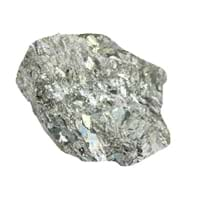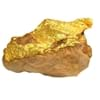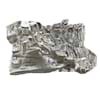Palladium vs Iron
Periodic Table
Symbol
Pd
Fe
Group Number
10
8
8
10
Period Number
5
4
Block
d block
d block
Element Family
Transition Metal
Transition Metal
CAS Number
7440053
99+
7439896
99+
Space Group Name
Fm_ 3m
Im_ 3m
Space Group Number
225.00
2
229.00
1
Facts
Interesting Facts
- Palladium alloys are used for Jewelry contains (95% Palladium and 5% Ruthenium)
- In the late 1800s, Palladium metal used have more economical value than the Platinum metal.
- Palladium element is known as a good catalyst
- Iron is not always magnetic in nature, its allotrope are ferromagnetic and the B allotrope is nonmagnetic.
- The blood consists Iron in hemoglobin molecules to transfer Oxygen in the body.
Sources
Ores of metals
Earth's crust, Found in Minerals
History
Who Discovered
William Hyde Wollaston
Unknown
Discovery
In 1803
Before 5000 BC
Abundance
Abundance In Universe
2 * 10-7 %
22
1.1 * 10-1 %
1
Abundance In Sun
~0.0000003 %
24
~0.1 %
1
Abundance In Meteorites
0.00 %
99+
22.00 %
1
Abundance In Earth's Crust
0.00 %
99+
6.30 %
2
Abundance In Oceans
Not Available
0.00 %
12
Abundance In Humans
Not Available
0.01 %
5
Uses
Uses & Benefits
- Mostly palladium metal is used in catalytic converters. In electronic industry it is used in ceramic capacitors of mobile and computer.
- It is used in jewellery and dental fillings and crowns.
- Iron metal alloy steel is used in the application of civil engineering and manufacturing.
- Alloys of iron with nickel, vanadium, chromium, tungsten and manganese have very useful properties.
Industrial Uses
Aerospace Industry, Automobile Industry, Electronic Industry
Aerospace Industry, Automobile Industry, Chemical Industry, Electrical Industry, Electronic Industry
Medical Uses
Dentistry, Pharmaceutical Industry, Surgical Instruments Manufacturing
Pharmaceutical Industry, Surgical Instruments Manufacturing
Other Uses
Coinage, Bullion, Jewellery
Alloys, Sculptures, Statues
Biological Properties
Toxicity
Toxic
Non Toxic
Present in Human Body
No
Yes
In Blood
Not Available
447.00 Blood/mg dm-3
3
In Bone
Not Available
380.00 p.p.m.
5
Physical Properties
Melting Point
1,554.90 °C
22
1,535.00 °C
25
Boiling Point
2,963.00 °C
33
2,750.00 °C
37
Appearance
Physical State
Solid
Solid
Color
Silver
Gray
Luster
Metallic
Metallic
Hardness
Mohs Hardness
4.75
9
4.00
10
Brinell Hardness
320.00 MPa
33
200.00 MPa
40
Vickers Hardness
121.00 MPa
36
608.00 MPa
18
Speed of Sound
3,070.00 m/s
26
5,120.00 m/s
8
Optical Properties
Refractive Index
1.72
1
Not Available
Reflectivity
84.00 %
4
65.00 %
12
Allotropes
No
Yes
α Allotropes
Not Available
Ferrite (alpha Iron)
β Allotropes
Not Available
beta Iron
γ Allotropes
Not Available
gamma Iron
Chemical Properties
Chemical Formula
Pd
Fe
Isotopes
Known Isotopes
38
1
26
13
Electronegativity
Pauling Electronegativity
2.20
4
1.83
14
Sanderson Electronegativity
Not Available
2.20
7
Allred Rochow Electronegativity
1.35
21
1.64
8
Allen Electronegativity
1.59
22
1.80
12
Electropositivity
Pauling Electropositivity
1.80
99+
2.17
40
Ionization Energies
1st Energy Level
520.23 kJ/mol
99+
762.50 kJ/mol
17
2nd Energy Level
7,298.22 kJ/mol
2
1,561.90 kJ/mol
36
3rd Energy Level
11,815.13 kJ/mol
3
2,957.00 kJ/mol
29
4th Energy Level
Not Available
5,290.00 kJ/mol
16
5th Energy Level
Not Available
7,240.00 kJ/mol
16
6th Energy Level
Not Available
9,560.00 kJ/mol
14
7th Energy level
Not Available
12,060.00 kJ/mol
15
8th Energy Level
Not Available
14,580.00 kJ/mol
14
9th Energy Level
Not Available
22,540.00 kJ/mol
5
10th Energy Level
Not Available
25,290.00 kJ/mol
8
11th Energy Level
Not Available
28,000.00 kJ/mol
9
12th Energy Level
Not Available
31,920.00 kJ/mol
9
13th Energy Level
Not Available
34,830.00 kJ/mol
9
14th Energy Level
Not Available
37,840.00 kJ/mol
11
15th Energy Level
Not Available
44,100.00 kJ/mol
11
16th Energy Level
Not Available
47,206.00 kJ/mol
13
17th Energy Level
Not Available
122,200.00 kJ/mol
1
18th Energy Level
Not Available
131,000.00 kJ/mol
2
19th Energy Level
Not Available
140,500.00 kJ/mol
3
20th Energy Level
Not Available
152,600.00 kJ/mol
5
21st Energy Level
Not Available
163,000.00 kJ/mol
5
22nd Energy Level
Not Available
173,600.00 kJ/mol
4
23rd Energy Level
Not Available
188,100.00 kJ/mol
4
24th Energy Level
Not Available
195,200.00 kJ/mol
1
Electrochemical Equivalent
1.99 g/amp-hr
30
0.69 g/amp-hr
99+
Electron Work Function
5.12 eV
3
4.70 eV
10
Other Chemical Properties
Chemical Stability, Corrosion, Ionization, Solubility
Corrosion, Ionization, Solubility
Atomic Properties
Atomic Number
46
99+
26
99+
Electron Configuration
[Kr] 4d10
[Ar] 3d6 4s2
Crystal Structure
Face Centered Cubic (FCC)
Body Centered Cubic (BCC)
Crystal Lattice
FCC-Crystal-Structure-of-Palladium.jpg#100
BCC-Crystal-Structure-.jpg#100
Atom
Number of Protons
46
99+
26
99+
Number of Neutrons
60
99+
30
99+
Number of Electrons
46
99+
26
99+
Radius of an Atom
Atomic Radius
137.00 pm
40
126.00 pm
99+
Covalent Radius
139.00 pm
99+
132.00 pm
99+
Van der Waals Radius
163.00 pm
40
200.00 pm
28
Atomic Weight
106.42 amu
99+
55.85 amu
99+
Atomic Volume
8.90 cm3/mol
99+
7.10 cm3/mol
99+
Adjacent Atomic Numbers
Valence Electron Potential
33.00 (-eV)
99+
67.00 (-eV)
20
Lattice Constant
389.07 pm
25
286.65 pm
99+
Lattice Angles
π/2, π/2, π/2
π/2, π/2, π/2
Lattice C/A Ratio
Not Available
Not Available
Mechanical Properties
Density
Density At Room Temperature
12.02 g/cm3
29
7.87 g/cm3
99+
Density When Liquid (at m.p.)
10.38 g/cm3
17
6.98 g/cm3
35
Tensile Strength
Not Available
11,000.00 MPa
1
Viscosity
Not Available
Not Available
Vapor Pressure
Vapor Pressure at 1000 K
0.00 (Pa)
27
0.00 (Pa)
28
Vapor Pressure at 2000 K
0.00 (Pa)
30
36.80 (Pa)
5
Elasticity properties
Shear Modulus
44.00 GPa
17
82.00 GPa
11
Bulk Modulus
180.00 GPa
9
170.00 GPa
10
Young's Modulus
121.00 GPa
16
211.00 GPa
9
Poisson Ratio
0.39
5
0.29
15
Other Mechanical Properties
Ductile, Malleable, Weldable
Ductile, Malleable, Weldable
Magnetic Properties
Magnetic Characteristics
Specific Gravity
12.02
21
7.20
99+
Magnetic Ordering
Diamagnetic
Ferromagnetic
Permeability
Not Available
6.3 * 10-3 H/m
1
Susceptibility
Not Available
2,00,000.00
1
Electrical Properties
Electrical Property
Conductor
Conductor
Resistivity
105.40 nΩ·m
29
96.10 nΩ·m
32
Electrical Conductivity
0.10 106/cm Ω
22
0.10 106/cm Ω
20
Electron Affinity
54.23 kJ/mol
17
15.70 kJ/mol
34
Thermal Properties
Specific Heat
0.24 J/(kg K)
23
0.44 J/(kg K)
13
Molar Heat Capacity
25.98 J/mol·K
33
25.10 J/mol·K
99+
Thermal Conductivity
71.80 W/m·K
23
80.40 W/m·K
22
Critical Temperature
Not Available
Not Available
Thermal Expansion
11.80 µm/(m·K)
33
11.80 µm/(m·K)
33
Enthalpy
Enthalpy of Vaporization
376.60 kJ/mol
19
351.00 kJ/mol
23
Enthalpy of Fusion
16.74 kJ/mol
18
14.90 kJ/mol
22
Enthalpy of Atomization
393.30 kJ/mol
22
414.20 kJ/mol
19
Standard Molar Entropy
37.60 J/mol.K
40
27.30 J/mol.K
99+
|
||
|
||
|
|
||
|
||
|












